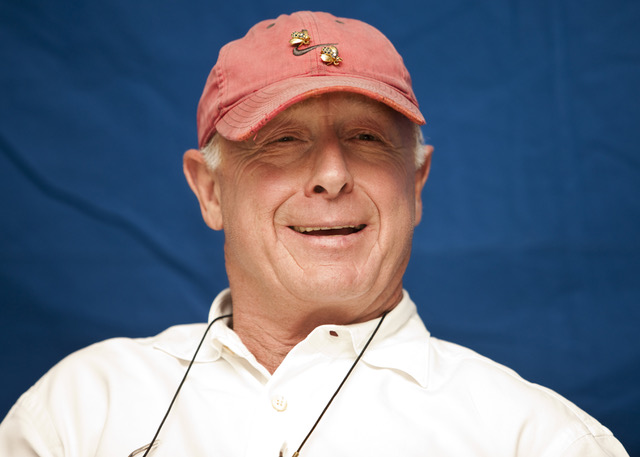Tony Scott Films
Unstoppable (2010)
The Taking of Pelham 123 (2009)
Déjà Vu (2006)
Domino (2005)
Manon Fire (2004)
Spy Game (2001)
Enemyof the State (1998)
The Fan (1996)
Crimson Tide (1995)
True Romance (1993)
The Last Boy Scout (1991)
Days of Thunder (1990)
Revenge (1990)
Beverly Hills Cop II (1987)
Top Gun (1986)
The Hunger (1983)

(Used with permission.)
Tony Scott
Extract from Top Gun Memos:
If the making of Top Gun (1986) were a crime scene, Cruise would appear on the security cameras while almost all of the DNA investigators found would link to Scott. Fans, partly because of the cultural focus on celebrity and partly because of Scott’s untimely death, often overlook the depth of his artistic ownership of the movie. When a prominent creative commits suicide it ends up in the lead paragraph of every story that follows, even overshadowing their work. Scott’s work is due another look.
Top Gun is Scott’s most successful movie, given its rare longevity, but there were many others. Yet in his life, Scott had more than a fair allotment of critics. He learned to manage them at the outset of his career by ignoring them. “I stopped looking at reviews after my first movie, The Hunger, because I got slagged off so badly,” he told the BBC a few years before his death. “With my movies I reach for difference and I reach for change and I think — especially the American press — they’re not up for change. They’re too comfortable with what they know.”
Much of the derision over time stemmed from the view the action genre movies were empty-headed entertainment. Scott preferred the term “popcorn” movies, happy to own that particular criticism. In the wake of Top Gun’s success, he told interviewer she knew it wasn’t a “deep-thinking” film. “I don’t want to go off and make War and Peace. I like making a hard core audio visual experience.”
There were endless comparisons to his brother, Ridley Scott. The logical parallels were numerous, starting with going to the same schools, and springing from the world of commercials, and being business partners. Both were termed “visualists,”meaning they placed more importance on the shot than the story, a comment that wasn’t generally made with love. At the same time, the comparisons belied vastly different choices in projects, and styles both on screen and on set.
Top Gun is the very rare movie that retains relevance35-plus years after release, but it’s just part of what Tony Scott contributed to cinema.
The Scott brothers were part of an influx of British directors who came to Hollywood in the early 1980s, and they shook things up. It was Ridley Scott, Alan Parker, who directed Midnight Express (1978), Fame (1980), and Evita (1996), and Adrian Lyne, who directed Flashdance (1983) and Fatal Attraction (1987).
“The American movie had gotten so traditional, wide shot, medium, close-up, do this and be done,” said Ward Russell who was gaffer on Top Gun, and cinematographer on Days of Thunder (1990) and Last Boy Scout (1991). “They were more interested in the impression they left rather than character development.”
He described it as “a whole new attitude that changed the style of filmmaking in the United States.”
The ideas brought forth with the influx of talent from across the Atlantic Ocean gradually became the new normal. “They brought an English style of moviemaking, different visuals, stylish looks and fast-moving action, and fast-action editing.”
Greg Schmidt, a cameraman who worked with cinematographer Russell and Scott, also described it as a change to the status quo. “Before, it was old school, how you’d always done it. Whereas a regular director would say, “This is what I want to see,” and the DP would get a 35 [millimeter lens], Tony would tell them to get an 85 [millimeter lens.]” To explain it he used the example of a camera aimed at a car with people in it. The focus of the lens would be on the people in the car, while things outside of it were distinctly out of focus. “Tony didn’t want everything to be in focus,” and that was different.
“The thing with Tony and somewhat with Ridley, too, was that they liked long lenses,” Schmidt continued. Changing the depth of field was a very different look. “Most directors would start with 18 or 20 lenses. Tony would start with 50.” That was a big difference in the ‘80s.
It’s not so unusual now, thanks to the British invasion, although most people don’t recognize its origins.
© 2022 Citation Press / Meredith Jordan